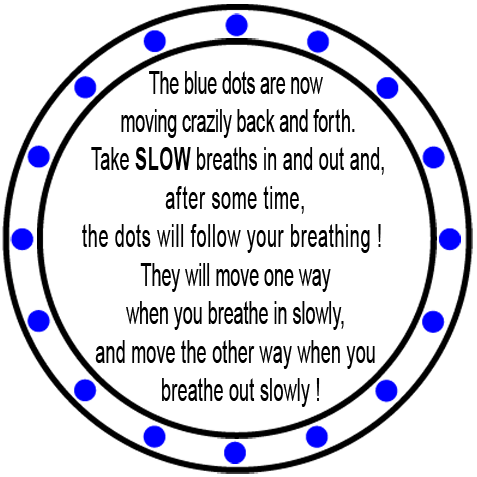If you want to establish or restore true inner peace and balance in your life in meditation is by far one of the most powerful personal development tools you can master. The problem is that few of us are into the idea of practicing meditaiton and this is why we composed this post.
Meditation certainly is not pseudoscience.
The practice has thousands of years of evolutionary history and innumerate modern medical doctors fiercely recommend trying meditation before or as part of prescribed medication treatment. The interesting thing is that anyone can master meditation provided they invest the time. The practice remains as one of the few ways that you can “decompress” and relieve anxiety, stress and calm your mind and body perfectly naturally.
Most of all it is free!
The inner sceptic rings the “free sounds too good to be true, it probably is” alarm bell and we are back at square one avoiding meditation.
So why don’t more people practise meditation if it can be so beneficial to health and wellbeing?
Here are a few of the excuses that I have used in the past to avoid getting into meditation.
- Fitting meditation into my lifestyle and daily routine is impossible. I am just too busy.
- The results are not immediate or apparent and my motivation to continue just dissolves before I get any value from it.
- I can’t calm my mind enough for meditation to actually work. So I lose interest and look elsewhere.
There are hundreds of reasons why other people don’t meditate, but those were my go-to’s and in many cases, the undertone is that it does not work and I don’t have time.
Dedicating precious time to building meditation routines that actually may seem trivial, however, if you consider that this time investment can transform so many aspects of your life, then it is certainly worth a relook, even if it did not work in the past. I suggest you follow this article to its conclusion.
To circumvent to and fro, we started looking for meditation solutions that would provide the most practical, beneficial and time conscious benefits to your life. Meditation routines that you can quickly fit into your day with minimal disruption and maximum benefit.
A chunk of consideration has been paid to people like me who are not entirely ready or open to the concept of meditation and thus the time/value prospect of what the benefits of “giving meditation a try” needed to be off the charts.
Why And How To Meditate
So the key objective of meditation practices is to calm your racing mind. To effectively switch off the mental chatter and connect with your deeper emotions. Trying to do that, after a day of exhausting stuff is often an almost impossible feat which is why a 10-minute morning routine that you can pop in before / after, taking a shower or brushing your teeth is the ideal opportunity gap and will line up your day ahead.
The objective kick start
The morning practice meditation is designed to clear your mind and focus on select your personal growth objective for the day. In a clear state of mind (in the morning before you look at your phone) you are already in a clear and fresh meditative state, so simply sit for two minutes and select one or two things that you would like to get better at during the day.
- Today I am going to be more open to conversations and other peoples ideas.
- Today I am going to open up my heart and be genuinely kind in as many ways as I can.
- Today I am going to give my family a call and see how they are doing.
- Today I am going to be more engaging with the people at work.
- Today I am going to wave and say hi to that grumpy person on the second floor that ignores me.
- Today I am going to drop 3 tasks that are causing me stress and not serving my wellbeing.
- Today I am going to make an effort to listen attentively
- Today I am going to ask [someone] [something]
- Today I am going to verbally validate and recognise something that someone in my life does so well for me.
- Today Im going to choose a new udemy course on a topic I really want to learn
- Today I am going to learn and practice the heart-mind Jedi trick
The list of potential things is endless, be imaginative and adapt to your life.
Don’t create an impossible laundry list, two simple things are enough.
Simple things that you can consciously achieve, that are a break from your normal routine, but that are positive to you or those around you. Two good validating and growing deeds a day is enough, simply choose to do things that are small and achievable and make you feel like you have done good in the world.
What is happening here is that you are stepping out of auto-pilot to do something different. Over time you get used to doing these small positive changes in your routine. This builds resilience and positive thought patterning in your mind.
Because they are so small and achievable you learn to psychologically congratulate yourself for completing the exercise and meeting those days meditation objectives. This works to rebuild your self-esteem and self-worth as you continue to add value to your own life and the lives of those around you.
It also works in the opposite direction too, so if you set massive objectives and you don’t achieve those objective you will feel defeated. So only choose tasks you absolutely will achieve.
Incremental conscious steps are absolutely harmless building block stuff. They simply lay foundations for the bigger stuff and help you slip into guru level mindful relaxed, calm and clear states.
The Heart-Mind Hack Meditation
The following “mind hack meditation solution” comes from nearly 20 years of research and can be performed in a couple of minutes.
This simple technique will give you many of the core benefits of full meditation (without actually meditating).
The heart-mind hack a conscious breathing technique that is used to instantly destress.
Take a look at the gif image and follow the instructions to see how intrinsically linked your breathing is to your mental states.
This mindfulness / meditation and breathing technique is so simple I have learned to instantly switch it on and use it everywhere and anywhere whenever I need it.
By simply breathing in and out your mind creates a visual switch in the directions of the spinning dots. While this has little to do with the exercise it demonstrates the immediate connection your mind has to your breathing and that is the premise of understanding this next mindfulness technique.

The technique is called the Quick Coherence(R) technique that will enable you to tap into more of your inner clarity and balance.
The term coherence describes the state where your nervous systems, cardiovascular systems, hormonal and immune systems are working and functioning together most efficiently.
To reach a state of coherence one must understand first that your heart rhythms echos your emotional state and what is happening in your nervous system. While many mindfulness techniques focus on selecting the right emotions for the moment the reality is that these systems are all working together and affect each other.
When your heart starts to signal “incoherence” to the brain, subconscious brain functions triggers the stress response and cross-reference and check the validity of signals, switching off and on certain responses to asses the potential danger. This checking process triggers emotional memory residue of past events that interfere with valid assessments of the situation.
Conversely, if you are feeling more connected and happy, joyful or ease your heart rate enters a far more steady or “coherent” pattern that is the signal of safety and emotional balance gets routed up to the brain.
You have the ability to put yourself into this state of coherence by simply learning how direct your emotional wellbeing from your heart.
The heart is part of a body system and heart coherence is a physical stop that in turn helps your mind to calm down that in turn relays to the nervous system that things are ok and that the stress checking responses can be reigned in, the attached human being is doing fine.
Building heart coherence and focus to settle your mind will permit other hormonal releases that are fundamental for you to experience inner peace, positivity and deeper states of meditation. As a pre-meditation practice to reach far deeper states faster than would ordinarily be possible.
The Three-Step Coherence Technique
- Heart Focus: Bring your mental attention to the area of your heart or the centre of your chest.
- Heart Breathing: Breath in focussing on that area of where your heart is and imagine that your breath is flowing into and out of that area. With each breath imagine your heart calming into a steady healing beat.
- Heart Feeling: As you focus on your heart breathing bring a positive memory into your mind. Choose a time when you felt good, happy and safe and reimagine that time and that positive feeling, now ebbing back into your body and mind.
Repeat the above for a few minutes, if possible you can close your eyes for a few breaths in and out and deep dive into the serene imagination zone.
And continue breathing with that calm focus for as long as you can even bringing new positive calming and happy thoughts into your mind.
With such a simple routine it is easy to quickly pull into different parts of your day with minimal disruption. You can do this by selecting times that won’t be missed. Quick three to five-minute boosters to that direct energy and focus to your heart, breathing and thought direction. It is so simple anyone can do it.
Early in the morning, just before lunchtime or just before bed should become the standard routine. Then try squeeze in a few more between those times.
Once you start to notice how many times in your day you are caught up waiting a few minutes. Give yourself a moment and rather than looking at your phone, or running over some negative thoughts that dont serve you, simply try recharge your headspace using this mindful heard meditation technique.
As they say, practice makes perfect, the more often you do it throughout the day the more in control of your emotions and heart systems you will be.
By taking this coherence approach you will begin to feel the positive effects the state of coherence has on your whole body, this state is what many people that practice meditation can spend many years trying to get to and will become an invaluable tool for the rest of your life.

This post was authored by Doug Kemp following a conversation with Steve Borloz and Tamzin Williams. I author and edit most of the content on the Recovery Direct website and ensure that we are adding value in each of the pages we produce.
Somewhat of recovery and personal growth voyeur/journalist, father of two beautiful human beings, a supporter and an internet freak. I play a background instigator role in many of the personal growth and communications projects operating within SA.
More About Recovery Direct’s Setting Practice
This “setting” method helps to establish your daily resilience to stressors and provides the skills required to deescalate strong emotional feelings that come up during the day thereafter. The setting provides a pool of emotional balance that can be dipped into throughout the day, which is why it happens first thing in the morning with a clear mind.
Daily setting sessions at the centre are initially a bit hard, however, they are purposefully designed to push your “normal routine” boundaries and activate muscular, breathing and nervous system controls. With practice, the routine becomes easier and will start helping you to experience less reactive states throughout the day.
Some of the centre morning routines will also be provided on the YouTube channel by video invite and for the continued journeys of patients of the centre.







